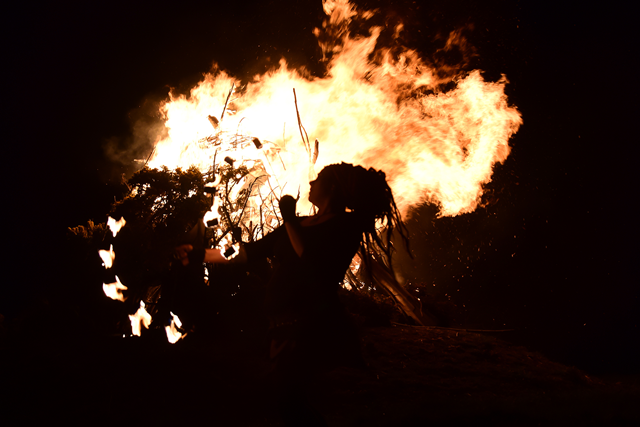By Michael Sheane
Beltane or May Eve marked the real beginning of summer, a time when the flowers started to bloom and the meadows became more colourful.
The tribes or the ‘tuatha’ or tribal regions left winter behind them, and it was a time to visit their friends and relatives. The tribes gathered together to celebrate this feast, and plans were made for the coming summer.
The sun god shone upon the fields, rivers, hills and mountains, and the druids prayed for the good of the community. Major fires were also lit and beasts were sent into the fields, after wintering in barns and yards, by being driven before fires, so killing off any lingering infections.
Belenos, the shining one, looked on, but little is known about his rites. The celebrations to mark the end of winter were lavish. The ‘sidhe’ doors were opened and the fairies played tricks on the community. The festival was called Cetshaman, a purely pastoral feast. Great fires were also lit for the celebration of Beltane, a practice that continued into Christian times. The word ‘Beltane’ incorporates the word ‘fire’, also known in Northern Italy, Southern Gaul and Noricum.
Belenos appears to be one of the oldest Celtic gods associated with the land. For the Gaelic gods, the land offered inspiration. The concept of the land, which took second place to the spirit, was widely received. Land was set aside for the spirit of the gods, the fields and mountains the home of these pagan spirits. If the land prospered, it was because the gods were shining down upon the Gaels of Erin. The fields were emerald, hence the name ‘Emerald Isle’.
The Gaels or the Milesian race had come to Ireland in about 1000 BC, and they brought their deities with them. It is not quite known how the Gaels conquered the island, but the early annals referred to the Gaels. They brought the celebration of Belenos with them. It was a time when the Gaels loved to hear the sound of a harp or bagpipe. However, things did not warm up until what we call June.
In the Boyne valley, the Gaelic High Kings also celebrated the coming of summer, but the High King was not a divine being, although he was quite respected throughout Ireland as a confederate figure. The same sun shone down upon the Irish capital, Tara, as on the castle of Dunseverick on the north Antrim coast in the province of Ulster.
The festival of Beltane was one of the other major events in Ireland associated with the land. At this time, a May king or queen would be crowned in honour of the sun. May is still celebrated throughout Ireland and Britain with a folk dance around the Maypole, using ropes and flowers picked from the fields.

